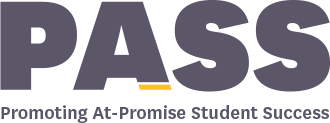KEY FINDINGS
The PASS project is a multi-year, mixed-methods, action-oriented research project dedicated to deepening understandings of student success in postsecondary institutions. Conducted in collaboration with students, staff, faculty, and administrators at three University of Nebraska campuses, the study is designed to provide actionable guidance for a wide range of postsecondary stakeholders.
The study’s overarching takeaway is that when institutions or programs provide a coordinated and validating culture of support, at-promise students experience stronger academic and psychosocial outcomes.
Key findings highlight:
- A notable link between students’ academic and psychosocial outcomes, including well-being, belonging, and mattering;
- The importance of scholarships and grants for low-income student retention and graduation;
- Improvement of low-income students’ major and career development outcomes when faculty, staff and administrators provide support that is proactive, ecological, validating, coordinated, and tailored;.
- The efficacy of student success programs that offer substantial financial aid, signal high expectations for success, require or recommend coursework, provide multiple years of support, and facilitate meaningful connections with educators (regardless of their role);
- Students benefit when offices, programs and departments coordinate support instead of requiring students to figure out how to navigate a complex, often siloed, web of campus supports and services.
- The value of proactive advising to bolster student success, including establishing consistent points of contact (i.e., advisors, peer mentors, mid-semester meetings) and tailoring services to meet student needs;
- The potential of professional learning communities as a mechanism to foster institutional culture change, in particular through incremental and coordination actions;
- The value of ecological validation, where educators (e.g., faculty, staff, advisors) affirm students’ capabilities for academic and social success and nurture student success through validating and proactive approaches that seek to connect students with campus resources in meaningful ways.
Please explore our RESEARCH tab for peer-reviewed articles and PRACTICE tab for practitioner-oriented briefs pertaining to the above findings. To learn more about the first phase of the project that focused on how the Thompson Scholars Learning Communities programs produced positive short- and long-term student academic and psychosocial outcomes, please click here.


